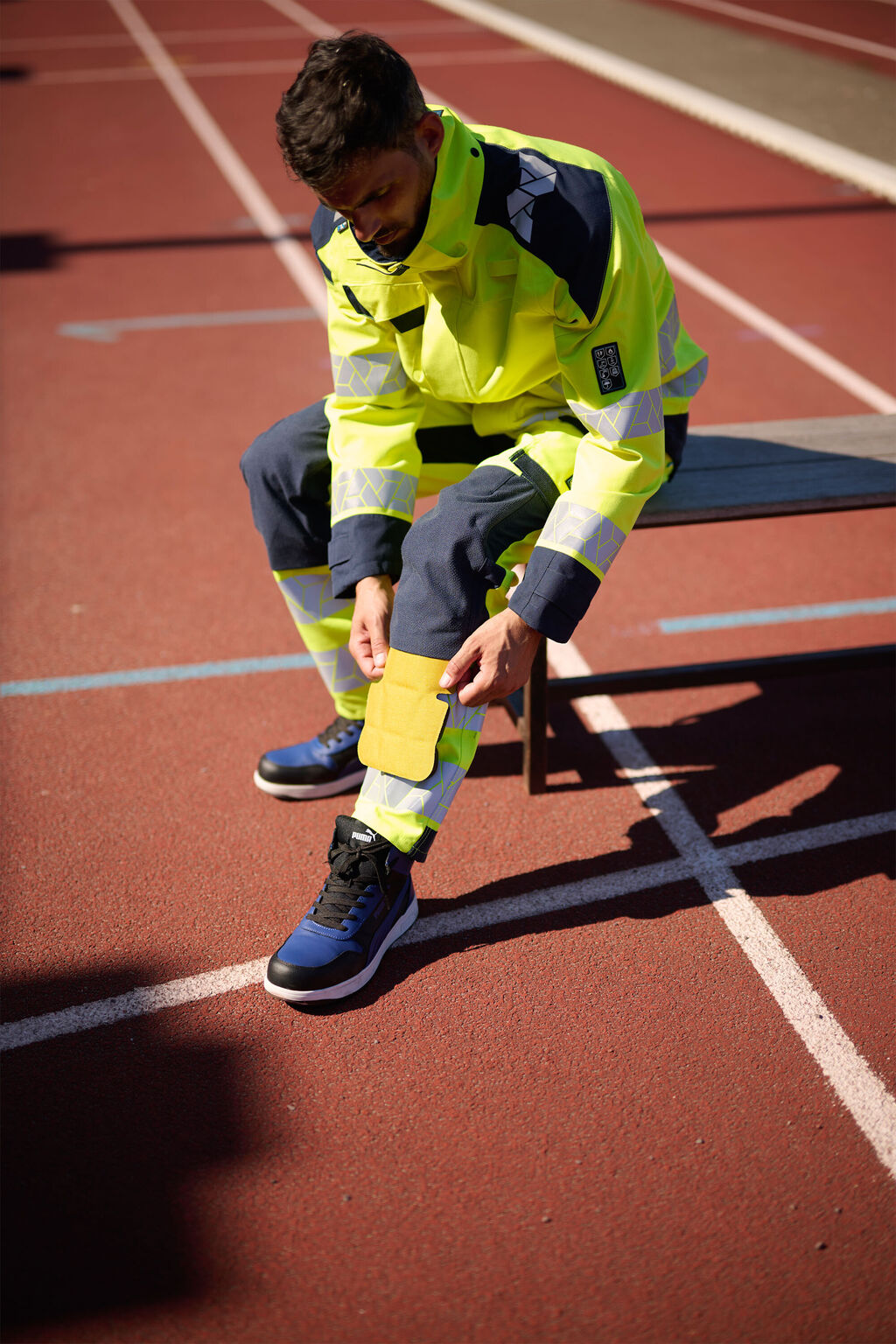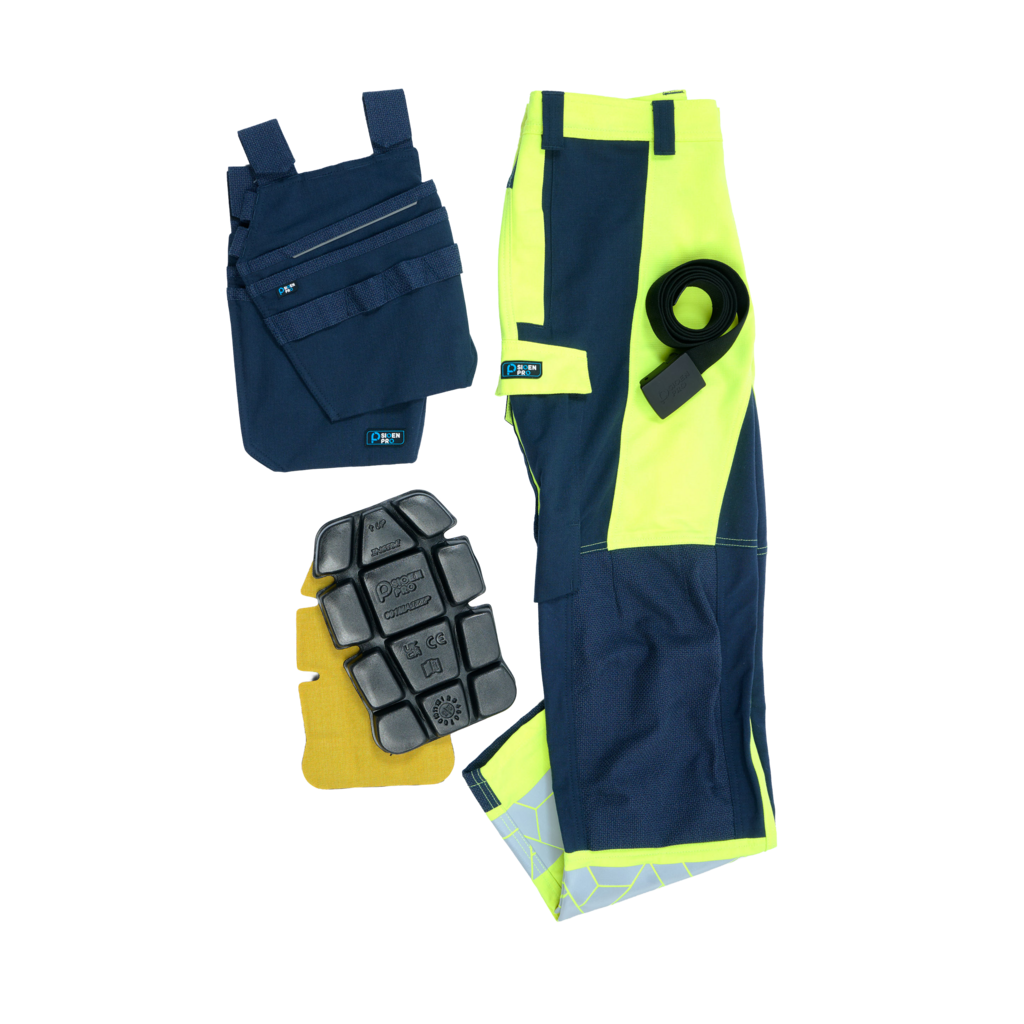Work in a kneeling position

When to use EN 14404 knee protection
EN 14404-certified knee protectors are intended for workplaces and tasks that involve frequent or extended kneeling, such as flooring, construction, plumbing, tiling, electrical installations, or assembly work.
The standard specifically applies to occupational knee protection used in industrial and professional settings. It does not apply to protectors intended for sports, medical, or motorcycle use.
About the EN 14404:2024 standard
EN 14404:2024 is the current European standard specifying the requirements, test methods and performance levels for personal protective equipment (PPE) that protects the knees during work in kneeling positions. It replaces the previous EN 14404:2004 + A1:2010 version and introduces a more detailed structure divided into six distinct parts, each addressing a specific type of knee protection.

The six parts of EN 14404:2024 are:
EN 14404-1:2024: Test methods for knee protectors.
EN 14404-2:2024: Requirements for wearable knee protectors (Type 1).
EN 14404-3:2024: Requirements for individual combinations of kneepads and garments (Type 2).
EN 14404-4:2024: Requirements for interoperable combinations of kneepads and garments (Type 2).
EN 14404-5:2024: Requirements for knee mats (Type 3).
EN 14404-6:2024: Requirements for kneeling systems (Type 4).
Performance requirements
under EN 14404
The performance of a knee protector is determined by its resistance to puncture and its ability to distribute pressure effectively.
1. Types of knee protection
The EN 14404:2024 standard defines four types of knee protectors, depending on how they are used and integrated into workwear.
| Type | Description | Configuration / Use |
|---|---|---|
| Type 1 | Wearable knee protectors | Worn independently from clothing; attached directly to the body, typically with straps. |
| Type 2 | Integrated or combined systems |
Kneepads designed to fit into or be used together with certified garments. Can be: - Individual combinations - Interoperable combinations |
| Type 3 | Knee mats | Separate mats placed on the floor to kneel on during work. |
| Type 4 | Kneeling systems | Complete kneeling supports or mobile platforms offering extended cushioning and movement. |
2. Performance levels of knee protectors in EN 14404:2024
The EN 14404:2024 standard defines four performance levels based on a protector’s resistance to penetration and its ability to distribute pressure. Higher levels indicate greater protection against mechanical stress and sharp or uneven surfaces.
| Performance level | Penetration resistance | Force distribution | Test surface | Protection offered |
|---|---|---|---|---|
| Level 0 | No protection | < 30 N | Flat surface | No resistance to penetration; minimal pressure reduction. |
| Level 1 | ≥ 100 N | < 30 N | Flat surface | Basic protection against mechanical stress on smooth floors. |
| Level 1U | ≥ 100 N | < 30 N | Uneven surface | Protection suitable for irregular or rough surfaces. |
| Level 2 | ≥ 250 N | < 30 N | Uneven surface | Highest level of protection against sharp or uneven surfaces. |
About the symbol
Certified knee protection in the Sioen PRO range is identified by a pictogram showing a hammer. Beneath the pictogram, the following information is displayed:
This clear labelling allows users to quickly recognise the protection type and level of their knee protection, ensuring full compliance and correct use within the Sioen PRO range.
Correct use and maintenance of EN 14404 garments
To ensure lasting protection and compliance with EN 14404, always use and care for your knee protection correctly.
Use the certified combination – Always pair your knee pocket trousers with the specific kneepads they are certified with. Only the tested combination guarantees full EN 14404 protection.
Position correctly –Insert the kneepads correctly into the knee pockets, following the markings on the pad itself (“knee this side” and “top”) to ensure the right orientation and optimal protection. Wearing trousers with the correct inseam length also helps position the kneepad at the right height when kneeling.
Inspect and renew – Check kneepads regularly for wear, cracks, deformation or loss of elasticity/cushioning, and replace them as soon as performance or shape degrades.
Clean with care – Remove kneepads from your trousers before washing. They are not suitable for machine washing. Wipe clean by hand with a damp cloth.
Proper maintenance not only extends the life of your knee protection but also ensures continuous comfort and reliable impact absorption throughout its service life.



